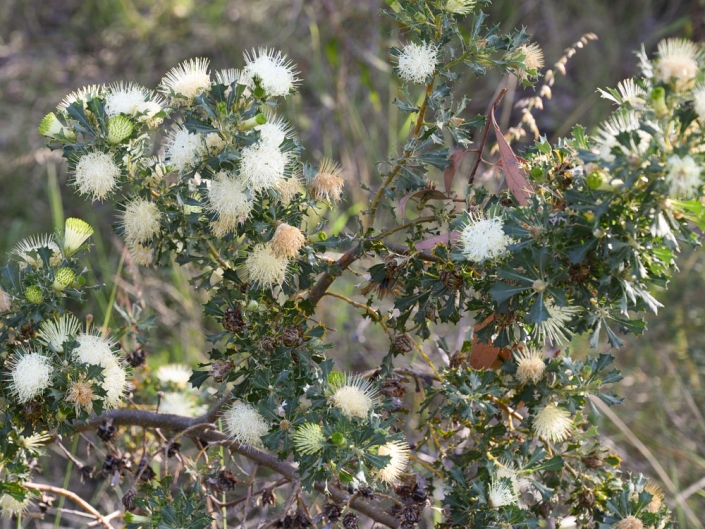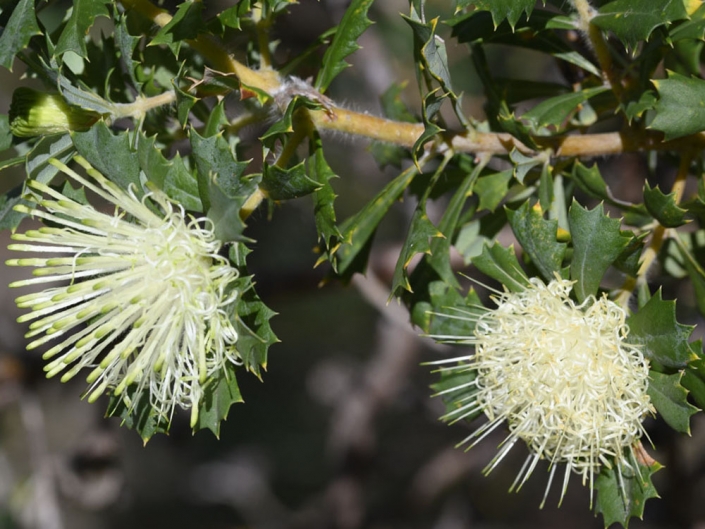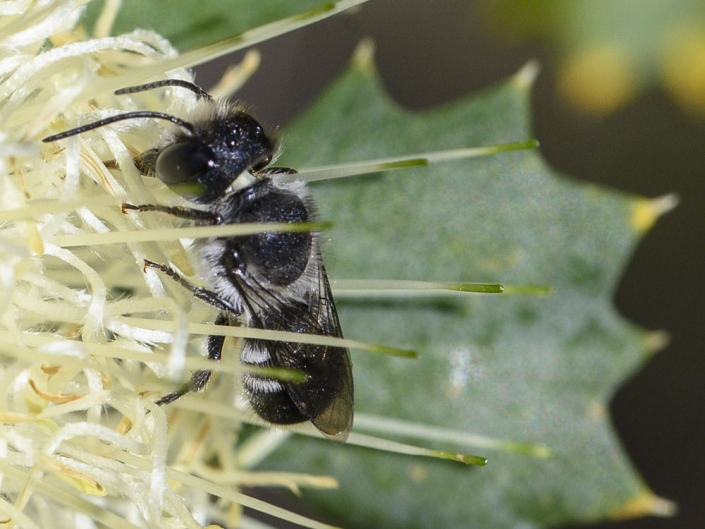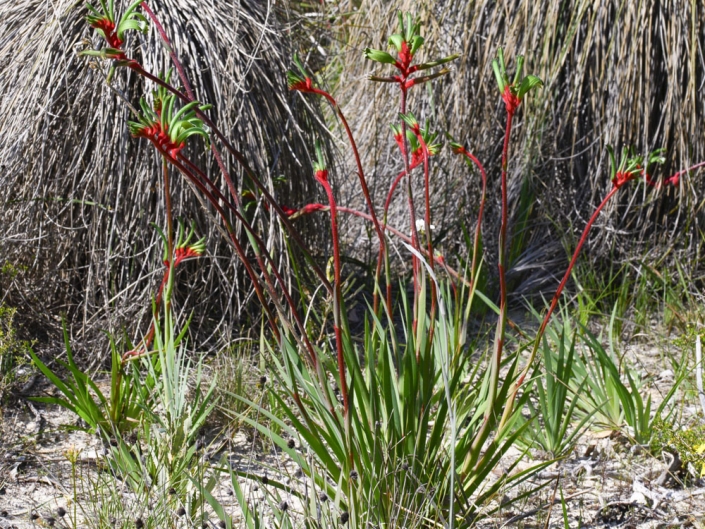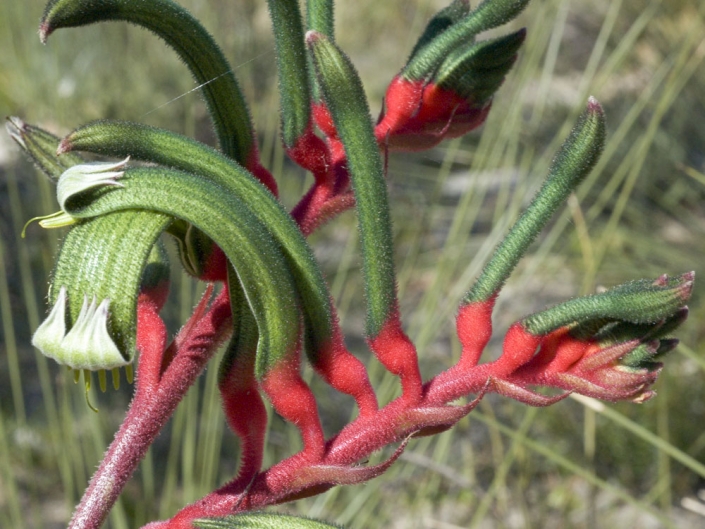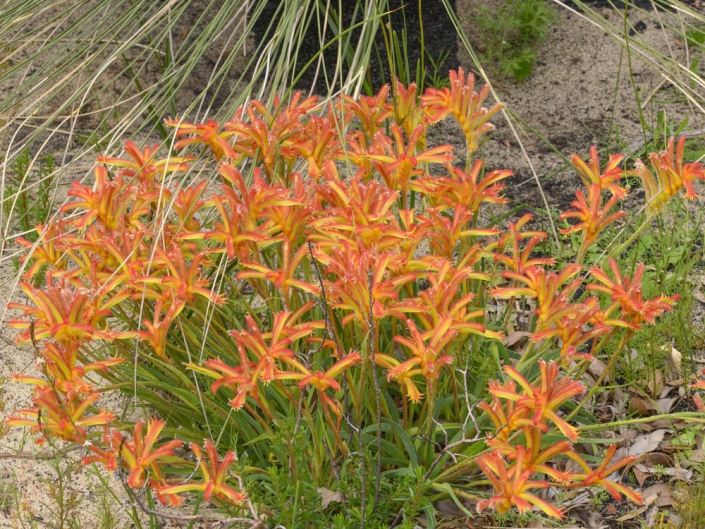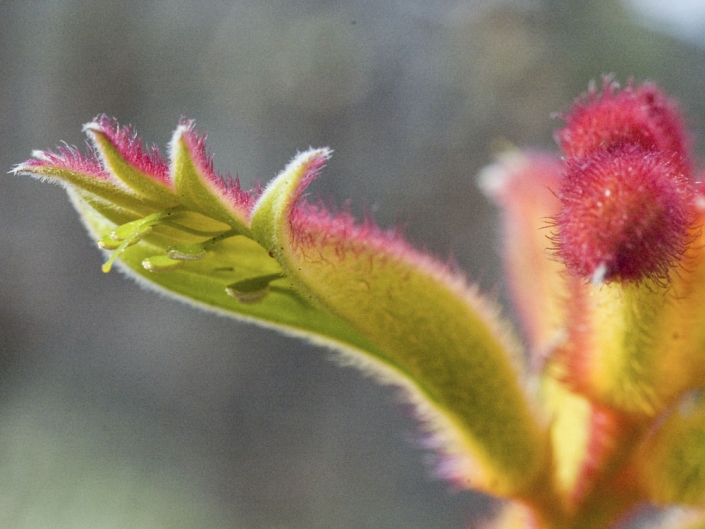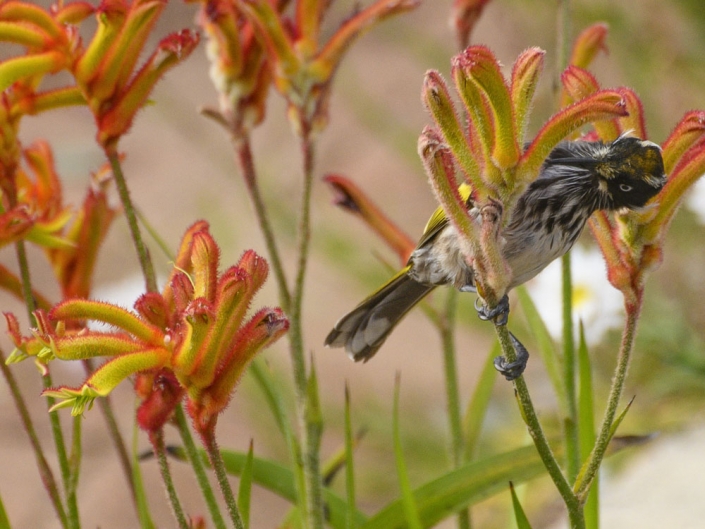Point of Interest 14: Fire Break Area
North of the trail the banksia woodland is in good condition but relatively open due to fire impacts. There also are some disturbed weedy areas near the firebreak along the school fence. Patches of Kangaroo Paws occur here in spring. Parrot Bush grows west of the POI marker.
Common Wildflowers
Winter – Swan River Myrtle, Yellow Buttercups (Hibbertia hypericoides)
Spring – Kangaroo Paws, Parrot Bush (Banksia sessilis), Blueboy (Stirlingia latifolia)
Late Spring & Early Summer – Blueboy in seed, Jarrah
Focus Topic 29. Parrot Bush
Parrot Bush (Banksia sessilis) is a large shrub in the plant genus Banksia in the Proteaceae family. It was known as Dryandra sessilis until 2007, when the genus Dryandra was merged into Banksia. This shrub is widespread throughout southwest Western Australia. It is found on sandy soils over laterite or limestone, often as an understorey plant in open forest, woodland or shrubland. As the name suggests, this shrub is an important food for parrots, especially black cockatoos, which eat its seeds. This large shrub is relatively short-lived but has regenerated from seed next to dead parent plants here.
Focus Topic 30. Kangaroo Paws and Cats Paws
The Red and Green Kangaroo Paw (Anigozanthos manglesii) is a spectacularly large and showy flower that can only occurs in Western Australia. This iconic plant is the floral emblem of Western Australia and is also represented on the Coat of Arms. Kangaroo Paws have a basal clump of fleshy sword-shaped leaves that produce flowerings spikes about 1 m tall with showy red and green flowers in spring. Cats Paws are a smaller widespread species of Anigozanthos, producing orange furry flowers from stems about 30cm in height in spring. Anigozanthos species are related to Cottonheads (Conostylis) and Bloodroots (Haemodorum), as explained in Focus Topic 19. These species are not threatened, but like all wildflowers are protected under state legislation.
Both Cats Paws and Kangaroo Paws have large flowers on a sturdy stalk with amazingly complex adaptations for bird pollination. These include colours that are less attractive to insects, such as red and green, funnel-shaped flowers that fit a birds’ bill and head, nectar accessible to birds and a stem strong enough to support perching under flowers. Flowers are also arranged for efficient bird access and each flower bends sideways after pollination so the next flower faces birds perching on the stem. You may find honeyeaters visiting these flowers to feed on nectar and to pollinate them. Anigozanthos plants are most common several years after a fire which stimulates germination of soil-stored seed.







